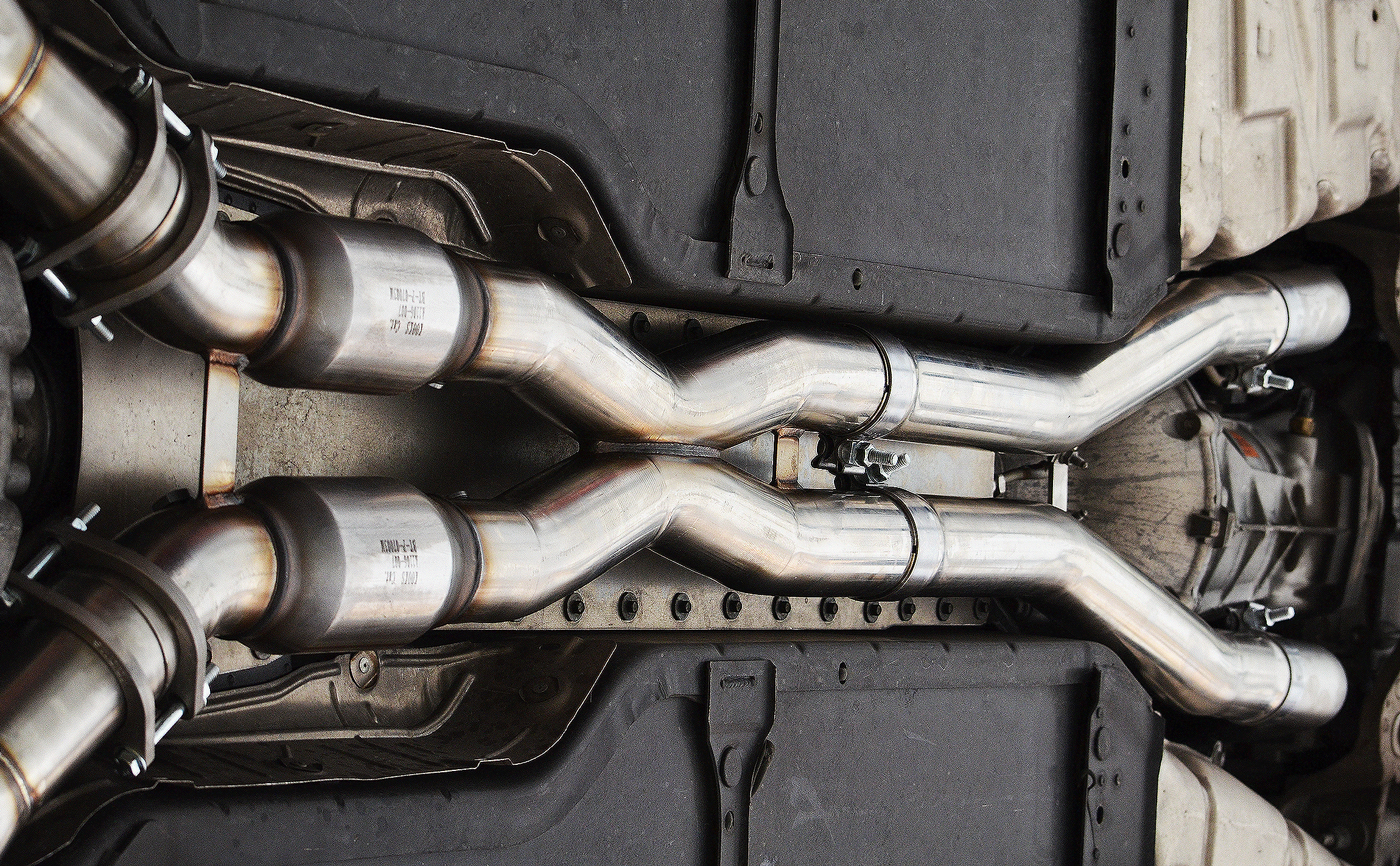
(Image/Xtreme Motorsports)
H-pipe vs. X-pipe? Which crossover exhaust system design is better? That depends, but we’re going to try to help you make the best choice.
Where does the H-pipe or X-pipe go in your exhaust system? You always want to place the H-pipe or X-pipe as far upstream as possible because of the science behind how exhaust gas pulsing and scavenging vacuum affect engine performance. However, the particulars of your vehicle could limit your placement options.
Does an X-pipe make more power than an H-pipe? Yes, generally it does. But there’s more to the story.
Does an H-pipe make more low-end torque than an X-pipe? Yes, also.
So deciding whether to choose an H-pipe or X-pipe (or whether you should just ride with your stock exhaust) is entirely dependent on your vehicle’s intended use.
The key to optimizing your exhaust system for peak performance has everything to do with how effectively exhaust scavenging occurs within your setup.
…
[Scroll down to the bottom of this article for a video featuring Summit Racing tech adviser Carl Pritts going over the H-pipe vs. X-pipe debate.]
…
What is Exhaust Scavenging?
Proper exhaust scavenging occurs when the exhaust pulses of the engine are tuned to the exhaust system in order to fully evacuate each cylinder of spent exhaust gas. This keeps your fresh incoming fuel and air from intermixing with exhaust gases.
Which Makes More Horsepower: An X-Pipe or H-Pipe?
Strictly from a horsepower standpoint, X-pipes tend to make more power than H-pipes, as exhaust scavenging performance tends to be better in an X-pipe crossover design. (NOTE: This is ONLY true when your X-pipe dimensions are properly matched to the exhaust gases produced by your engine.)
But this is peak horsepower we’re talking about, and we surely won’t begrudge your desire to maximize peak power in your vehicle.
If this is your daily driver or a towing application, however, it’s possible that an X-pipe could cost you some low-end torque and acceleration in the 0-60 miles-per-hour range where we usually spend most of our driving time.
Your vehicle may still be making more power, but if it’s later on the powerband when you get into higher rpm driving north of 3,000 or so, you may not like the sluggishness you feel during acceleration.
Which Makes More Torque: An H-Pipe or X-Pipe?
Again, this is application-specific, and a generalization, but it’s not uncommon for an H-pipe merge to outperform an X-pipe to improve low-end torque for vehicles pulling a camper or race trailer, or in daily drivers.
Where to Put the H-Pipe or X-Pipe Crossover in Your Exhaust System During Installation
The answer to the commonly asked question of where to locate the X-pipe or H-pipe merge within your exhaust system will mostly be determined by your vehicle. Your driveshaft location, transmission crossmember design, ground clearance, and other factors can come into play.
But because getting those exhaust gases to converge as quickly as possible will promote the most effective exhaust scavenging, putting the merge pipe as far upstream, or as close to the engine as you can will typically result in the best-performing exhaust system.
What Exhaust Sounds Better: An H-Pipe or an X-Pipe?
Which band sounds better? The Beatles or Metallica? The Doors or Pearl Jam? Led Zeppelin or Rise Against?
Which instrument sounds better? The piano or the guitar? The tuba or the clarinet? The recorder or the kazoo?
More? No problem.
Which music style sounds better? Country or rap? Techno or opera? Polka or blues?
The kind of people who are super-into flutes and Air Supply might prefer exhaust notes that sound differently than those preferred by people who often jam to banjo music but also listen to a lot of Wu-Tang Clan.
We can only tell you what we prefer.
Kazoos. We love kazoos.
Bonus Tips for Choosing Exhaust Components and Maximizing Performance
- It’s possible that neither an X-pipe nor H-pipe will provide a tangible benefit to your vehicle. A stock Y-pipe can also promote good exhaust scavenging in the right vehicle.
- Changing an exhaust system will probably require a re-tuning of your carburetor or electronic fuel injection (EFI) system computer for your engine to respond the way you’d like it to.
- Coated headers and pipes, or adding exhaust wrap to them, helps to keep more heat in the exhaust which increases the velocity of exhaust gases. So insulating your exhaust pipes is another option for building more power in your vehicle.

[…] would an H-pipe or X-pipe help the low […]
Good info. Well written. Kazoos rock.
HI
I have some clients who need good sites so we have found your site which is good but our budget
is not high so please give us price for https://www.onallcylinders.com
we need dofollow link
we will pay you through paypal
need time for paying 3 to 4 days because only need verification from client
you can trust on us because we will not cheat you as we receive payment from client we will forward you..
The longer the Cross-pipe is in the H-pipe, the less benefit. The X-design brings back some low-rpm velocity, IF you have large diameter pipes (1 7/8″ primarys or bigger and 3″ or bigger collectors/system.) My 3″ collectors only (wide open exhaust) is 20 hp shy of the big diameter pipe/X to mufflers arrangement. If your pipes are too small, then open headers seem more powerful. Go big.